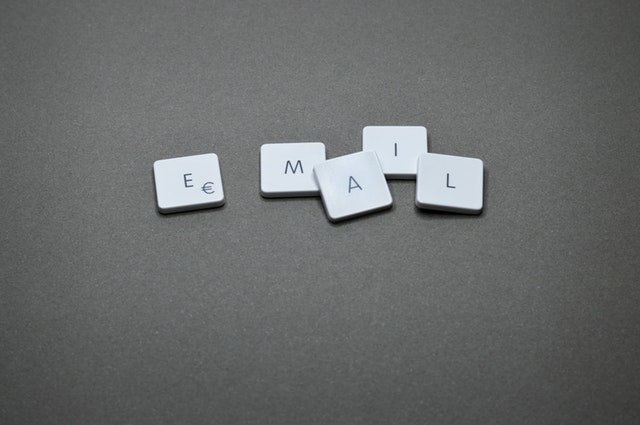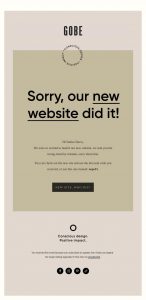
You might have gone through articles on creating different types of email campaigns but when was the last time you researched about in-mail apologies? Don’t we all mess up sometimes? Realization may be difficult and often embarrassing but nobody is perfect. Similarly seeking an apology is important when your email campaign messes up or your business causes inconvenience to your subscriber. Candid admission and apologies go a long way in the substance of healthy relationships. Apology emails are a critical part of risk management and crisis response. So, let us help you in putting together heartfelt apology emails.
What Is An Apology Email
An apology email is made when your previous email has a lapse or your organization caused any inconvenience to clients. It is an opportunity for you to come clean and continue having a healthy relationship with your customers. It might have happened that you forgot to include attachment and to set it right, you can add attachment and send again without giving another thought, familiar?
But not all mistakes are minor, some are more serious and require you to deal with carefully. Serious mistakes can hurt your business. Writing a timely, personalized apology email might be a step in correcting the situation. Like making mistakes, forgiving is also a human trait. Shipt used an attractive HTML email template for this message:

Which Mistakes You Need To Apologize For
Following are the most common mistakes that may compel you to draft an apology email:
- Incorrect Information
- Broken Links
- Typos
- Technical Errors
- Late Delivery
- Wrong Order
- Accidental Sends
- Bad Service
- Expired Offers
- Poor Quality Of The Product
Methodology Of Apologizing To A Customer Via Email
You need to have a standardized method whenever these kinds of embarrassing situations arise. Steps must include damage control and minimize future occurrences. Assessing the situation, diagnosing the mistake, taking corrective measures, finding out root causes, and improving methodology to eliminate recurrence in the future at the same time, and keeping abreast of your customers is essential. If you’re a growing organization, you may also want to stack responsive HTML email templates to speed up responses for common glitches.
1. Diagnose The Mistake
You will need to look at the entire episode from a 360-degree angle and assess the damage severity and nature of damage comprehensively. Connect all the dots and diagnose the mistake in its entirety. You need to remember that in these types of situations, honesty does pay, and defensiveness doesn’t.
2. Label Its Severity
Once you have diagnosed the mistake, then you will need to classify the issue on the basis of seriousness. It is very important you treat problems based on their severity, not too much nor too little. Once you have assessed the seriousness of the mistake, then you need to quantify the impact it may have caused. You can categorize them on the basis of severity. Minor mistakes that won’t hurt business or subscribers may not need a response. Mistakes that impede customer experience need to be resolved and acknowledged. You can also use free HTML email templates for such cases.
Blunders that may affect customers and your business negatively will need corrective measures and sincere apologies, and finally, critical issues that may cause long-term damage will need immediate response and preventive measures on an urgent basis. For minor mistakes, you may use a responsive HTML email template for sending a similar in-mail apology:

3. Creating Apology Emails
You will need to approach drafting and sending an apology in the same way as any other email marketing campaign. But it’s human nature that people who like to defend themselves don’t like to take full responsibility. Deflecting blame or making excuses will only worsen the problem further. The best way to address the issue in your emails would be to start with Dear (Name), acknowledge and own up your mistakes. Also, let the aggrieved party know what went wrong and how you are planning to stop recurrence in the future. It’s a good idea to offer them goodies. Thank them for their understanding. Make sure you are sending out an apology email at the earliest. You can create apology emails like the below one using free HTML email templates available online:

Why Emails Are Best For Making Apologies
You might not be able to apologize in person because time can be a constraint. You may not be able to set up a meeting with each subscriber. But an email not only helps you out in embarrassing moments but also is a date-stamped and time-stamped official medium of communication. Email allows you to curate your thoughts in a transparent and concise manner without a hurry. Email does not suffer time constraints as it enables you to get in touch with the customers almost instantaneously.
Summing Up
Empathy and sincerity are the keys here, and being too clever or defensive won’t take you far, and the situation with your customers will be exacerbated. As a marketer, it is important that you learn this life skill of apologizing. Not all organizations are willing to accept negative feedback and improve. Some are afraid of the customer outflow if they admit their mistakes. However most times, the situation would be quite the opposite.
People do understand that mistakes are unavoidable. An apology is a great way to rebuild relationships with your customers. It can help you retain a good impression of your organization, and that’s positive for your business. Hopefully, this article will help you if you find yourself in soup someday.
Author: Kevin George is Head of Marketing at Email Uplers, one of the fastest growing PSD to Email coding companies, and specializes in crafting professional email templates, custom Mailchimp email templates design and coding in addition to providing email automation, campaign management, and data integration & migration services. He loves gadgets, bikes, jazz, and eats and breathes email marketing. He enjoys sharing his insights and thoughts on email marketing best practices on his blog.
